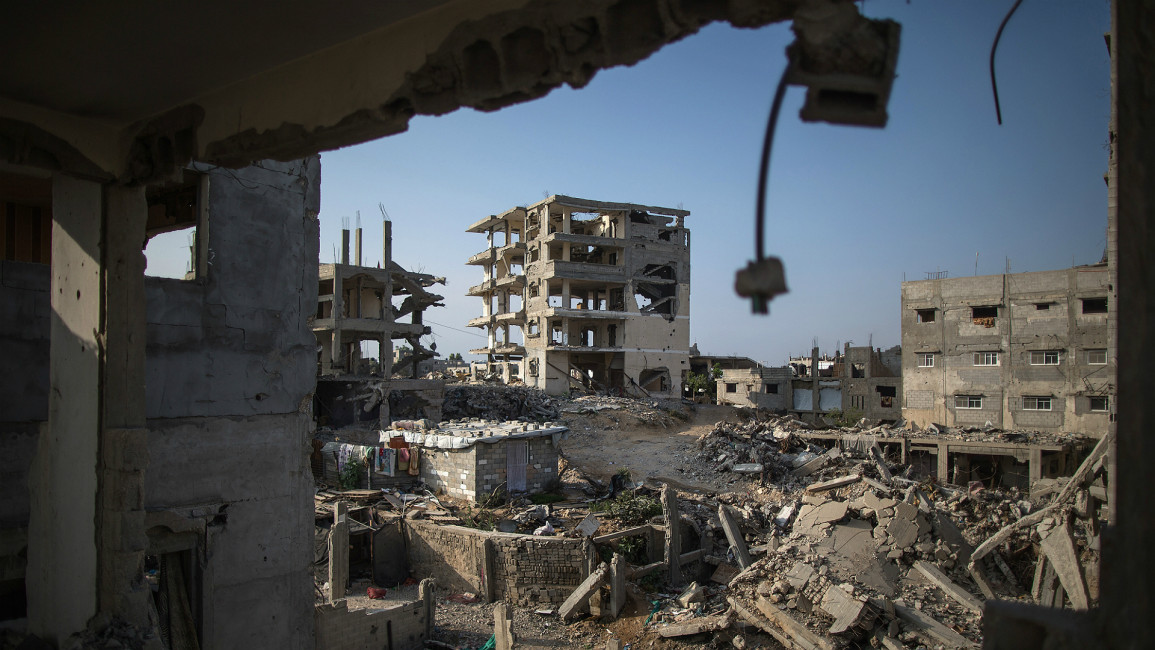More debris in Gaza than Ukraine: UN
Gaza is filled with more debris and rubble than Ukraine, the UN said Wednesday, with the mammoth task of clearing it made all the more costly and dangerous by the sheer amount of asbestos and unexploded ordnance.
Six months into Israel's war on Gaza Strip, the United Nations Mine Action Service (UNMAS) estimated the amount of debris in the Palestinian enclave at 37 million tonnes in mid-April, or 300 kilogrammes per square metre.
"Gaza has more rubble than Ukraine, and to put that in perspective, the Ukrainian front line is 600 miles (nearly 1,000 kilometres) long, and Gaza is 25 miles (40 km) long," said Mungo Birch, head of the UNMAS programme in the Palestinian territories.
But the volume of rubble is not the only problem, said UNMAS.
"This rubble is likely heavily contaminated with UXO (unexploded ordnance), but its clearance will be further complicated by other hazards in the rubble," Birch told journalists in Geneva.
"The figure for the amount of rubble in #Gaza is 37 million tons.
— United Nations Geneva (@UNGeneva) May 1, 2024
To put that in context, that's more rubble than in Ukraine, and in Ukraine the front is 600 miles. Gaza is 25 miles long."
- Charles (Mungo) Birch , head of @UNMAS in the State of Palestine pic.twitter.com/FLTTcV7i4U
"There's estimated to be over 800,000 tonnes of asbestos, for instance, alone in the Gaza rubble." The cancer-causing mineral used in construction requires special precautions when handling.
It is generally estimated that 10 to 15 percent of the munitions fired do not explode on impact and therefore represent a lasting danger for civilian populations.
Birch said he hoped UNMAS, which works to mitigate the threats posed by all types of explosive ordnance, would become the coordination body for mine action in Gaza.
It has secured $5 million of funding but needs a further $40 million to continue its work in Gaza over the next 12 months.
However, "the sector as a whole will need hundreds of millions of US dollars over multiple years in order to make Gaza safe again for the population", Birch added.
A meeting of the main players in these future operations was held two weeks ago in Amman, under the leadership of the United Nations Development Programme.
The UNDP is piloting the clearance plan and the participants went through the likely means and methods required when the time comes.
"Because the level of rubble is so unprecedented, it's going to take new thinking on how we proceed with the clearance," said Birch.
UNMAS has said that 65 percent of the buildings destroyed in Gaza were residential, and it would take 100 trucks 14 years to clear the rubble so far.
Birch said clearance operations were still in the planning phase but would require a significant amount of heavy installations.
"The methodology on how we're going to do that - it's still something that's being discussed because of the sheer scale," he said.
However, a precise assessment for Gaza remains impossible due to the violence of the fighting, bombings and difficulties of access.
"Until we've been able to get access to the north and can conduct an assessment we're not certain about the level of contamination," said Birch.
"Anecdotal stories suggest that it's exceptionally heavy in northern Gaza. Our teams have encountered unexploded ordnance on their missions to the north, and we believe that it will be a huge issue going forward."
The Gaza war sparked on October 7 after a Hamas-led attack in southern Israel resulted in the deaths of 1,170 people, according to an AFP tally of Israeli official figures.
Israel's brutal and unprecedented offensive has since killed at least 34,568 people in Gaza, mostly women and children, according to the health ministry in the territory. At least 10,000 more are buried beneath the rubble, the enclave's civil defense said Tuesday.



